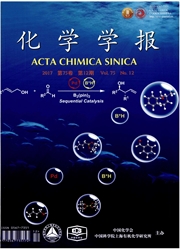

 中文摘要:
中文摘要:
基于最近Chang等在嵌段共聚物聚异戊二烯-聚2-乙烯基吡啶(PI-b-P2VP)的四氢呋喃-乙醇共混溶剂体系制备环状胶束的工作(Angew.Chem.2009,48,4594),我们在此基础上,用原子力显微镜对该体系形成环状结构的影响因素包括嵌段共聚物浓度、混合溶剂配比、溶剂选择性、溶剂挥发速度、溶剂滴加顺序及选择性溶剂的滴加速度等进行了详细研究,发现P2VP的选择性溶剂的引入是形成环状结构的关键因素.利用P2VP与氯金酸的络合,分析环状结构,并进一步结合动、静态光散射及冷冻透射电镜对此形貌的形成机理进行探究.
 英文摘要:
英文摘要:
Recently, Chang et. al. reported ring-shaped micelles of highly uniform shape and size could be formed from polyisoprene-block-poly(2-vinylpyridine) (PI-b-P2VP) diblock copolymer in THF/ethanol solvent mixture (Angew. Chem. 2009, 121, 4664). Based on their work, we prepared the ring-shaped morphology films by adding P2VP selective solvent (ethanol) dropwise into a mixture of PI-b-P2VP block copolymer in their co-solvent tetrahydrofuran with a certain volume ratio of THF/ethanol and spin-coating the solution onto the silica wafers. We systematically investigated the influencing fac- tors Qn the ring-shaped morphology by tapping mode atomic force microscopy (AFM), including copolymer concentrations (0.01, 0.02, 0.2, 0.4 and 2 mg/mL), the ratios of THF to ethanol (from 100 " 0, to 10 " 200), solvent selectivity (ethanol, ace- tone, water selective for P2VP and toluene selective for PI), solvent evaporation rates (0.048, 0.15, 0.3 mL/h), solvent drop- ping sequence and the dropping rates of selective solvent (1.13 mL/h, 6.72 mL/h and injecting ethanol directly into the solu- tion). The existence of solvent selective for P2VP and the ratio of THF to ethanol were essential for the formation of rings. In order to analyze the structure of the ring morphology, chloroauric acid (HAuCI4) was selectively loaded into P2VP phase by complexation and detected by AFM. Combining these results with dynamic light scattering (DLS), static light scattering (SLS) and cryo-transmission electron microscopy (cryo-TEM), a possible formation mechanism of rings was proposed: with the addition of ethanol which is a selective solvent for P2VP, PI-b-P2VP gradually self-assembled into ring-shaped micelles with the outer corona composed of P2VP and the inner core constituted of PI block. On the basis of a series of research, it is possible to control the ring morphology by changing experimental conditions which is promising for patterning application.
 同期刊论文项目
同期刊论文项目
 同项目期刊论文
同项目期刊论文
 Formation of Star-Like and Linear Nanofibers via Controlled Crystallization of Poly(3-dodecylthiophe
Formation of Star-Like and Linear Nanofibers via Controlled Crystallization of Poly(3-dodecylthiophe Phase behaviors and ordering dynamics of diblock copolymer self-assembly directed by lateral hexagon
Phase behaviors and ordering dynamics of diblock copolymer self-assembly directed by lateral hexagon Synthesis, Cocrystallization, and Microphase Separation of All-Conjugated Diblock Copoly(3-alkylthio
Synthesis, Cocrystallization, and Microphase Separation of All-Conjugated Diblock Copoly(3-alkylthio Self-Assembly of All-Conjugated Poly(3-alkylthiophene) Diblock Copolymer Nanostructures from Mixed S
Self-Assembly of All-Conjugated Poly(3-alkylthiophene) Diblock Copolymer Nanostructures from Mixed S Self-assembled microstructures of confined rod-coil diblock copolymers by self-consistent field theo
Self-assembled microstructures of confined rod-coil diblock copolymers by self-consistent field theo Self-Assembly of ABC Star Triblock Copolymer Thin Films Confined with a Preferential Surface: A Self
Self-Assembly of ABC Star Triblock Copolymer Thin Films Confined with a Preferential Surface: A Self 期刊信息
期刊信息
